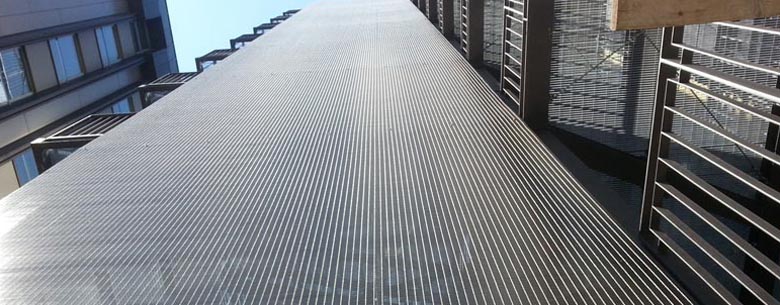Understanding Standard Perforated Sheet Sizes A Comprehensive Guide
Perforated sheets have become an essential component in various industries due to their versatility and functionality. These sheets, characterized by their holes or openings of various sizes and patterns, are used in applications ranging from architectural design to filtration systems. As industries evolve, the demand for standardized sizes has grown, leading to the development of common specifications for perforated sheets. This article delves into the significance of standard perforated sheet sizes, their applications, and considerations for selection.
What Are Perforated Sheets?
Perforated sheets are flat products that have been punched with a series of holes, creating a pattern that can be functional or decorative. Typically made from materials such as metal, plastic, or composites, these sheets can vary significantly in terms of hole size, spacing, thickness, and overall dimensions. The process of perforation entails using a punch and die set to create precise holes which can be tailored to meet specific requirements.
Importance of Standardization
The standardization of perforated sheet sizes is crucial for several reasons. First, it simplifies the design and manufacturing process for engineers and architects, as they can rely on commonly available dimensions, reducing lead times and costs. Second, standardized sizes enhance interoperability across different systems and applications, making it easier to integrate perforated materials into existing structures or equipment.
Common Standard Sizes
While perforated sheets can be tailored to specific needs, a number of standard sizes have emerged in the industry. The dimensions of perforated sheets are often specified in terms of width, length, and hole diameter. Common widths include 48”, 60”, and 72”, while lengths can range from 96” up to 120” or more. The hole diameter may also vary, but typical sizes include 1/8”, 1/4”, and 1/2”, depending on the application.
In addition, sheets are often categorized by the following standard thicknesses 0.020”, 0.030”, 0.040”, and 0.060”, which correspond to various applications from light-duty usage to heavy-duty structural projects.
Applications of Perforated Sheets
The versatile nature of perforated sheets allows them to be utilized in numerous applications across various industries
standard perforated sheet sizes

2. Industrial Filtration In manufacturing and processing industries, perforated sheets are employed in filters and separation equipment. The precise hole sizes ensure optimal flow rates while retaining unwanted particles.
3. Acoustic Panels Perforated sheets can help in soundproofing by absorbing sound waves, making them ideal for use in theaters, auditoriums, and recording studios.
4. Safety Screens and Guards In environments that require safety measures, perforated sheets can be used to create protective barriers that allow visibility while preventing access to hazardous areas.
5. Catering and Food Service Perforated trays and shelving are common in kitchens and food processing units, allowing for proper air circulation and drainage.
Selecting the Right Perforated Sheet
When choosing a perforated sheet, several factors must be considered
- Material The choice of material will depend on the application, durability requirements, and environmental conditions. Common materials include stainless steel, aluminum, and plastic.
- Hole Size and Pattern The necessary hole size and layout should align with the intended application, whether it be for aesthetic purposes, light passage, or filtration.
- Thickness The thickness of the sheet will determine its strength and suitability for different uses.
- Finishing Options Depending on the application, sheets may require additional finishing treatments to enhance durability or resistance to corrosion.
Conclusion
Standard perforated sheet sizes play an integral role in various applications across multiple industries. By understanding the importance of these standardized dimensions, businesses can make informed decisions when selecting perforated sheets that meet their operational needs. Whether in architectural design or industrial manufacturing, the right perforated sheet can greatly impact the efficiency and functionality of a project, making it essential for stakeholders to remain informed about available sizes and specifications.
-
Why Galvanized Trench Cover Steel Grating Resists Corrosion
NewsJul.10,2025
-
The Versatility and Strength of Stainless Expanded Metal Mesh
NewsJul.10,2025
-
Load Calculations in Steel Grating Platforms
NewsJul.10,2025
-
Keeping Pets and Kids Safe with Chicken Wire Deck Railing
NewsJul.10,2025
-
Hole Diameter and Pitch for Round Perforated Metal Sheets
NewsJul.10,2025
-
Aluminium Diamond Mesh in Modern Architecture
NewsJul.10,2025
Subscribe now!
Stay up to date with the latest on Fry Steeland industry news.

